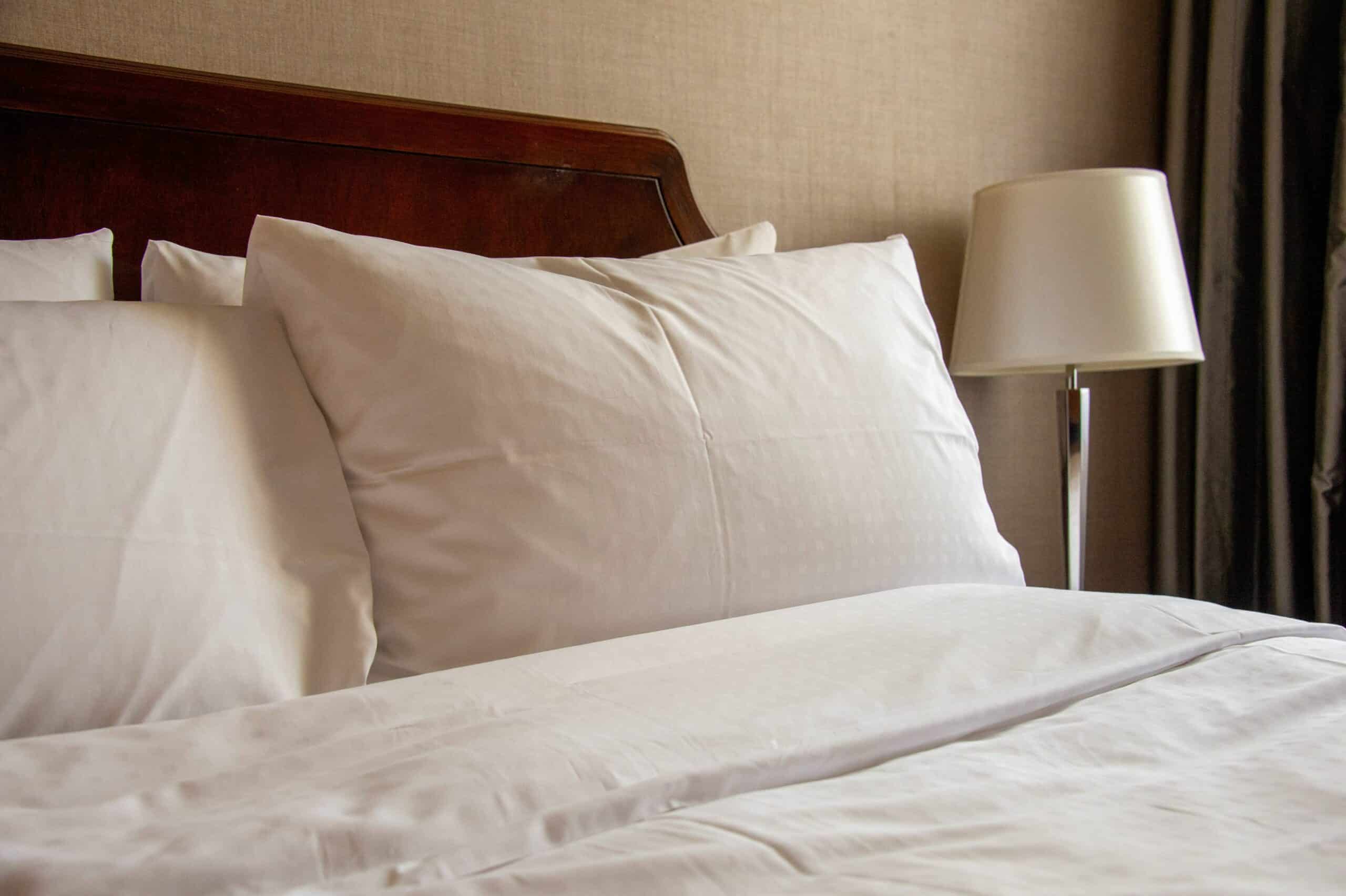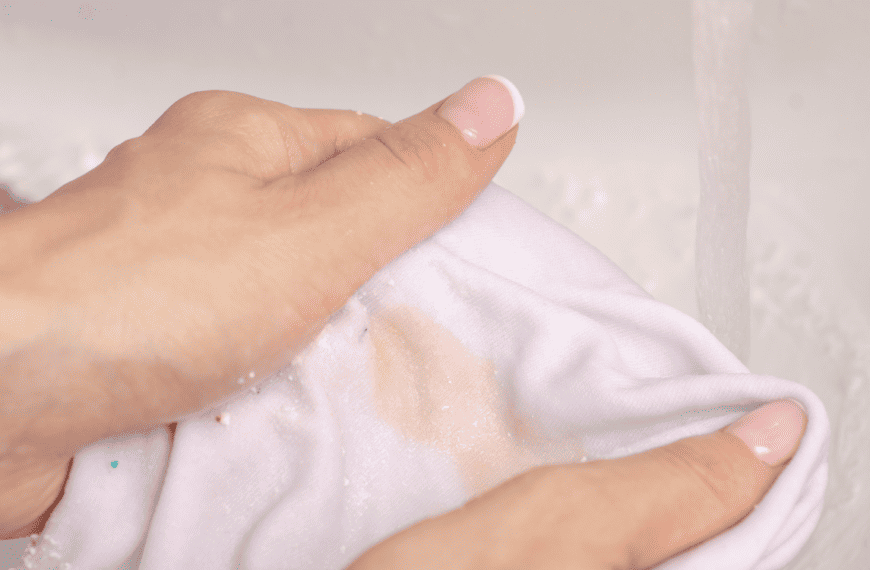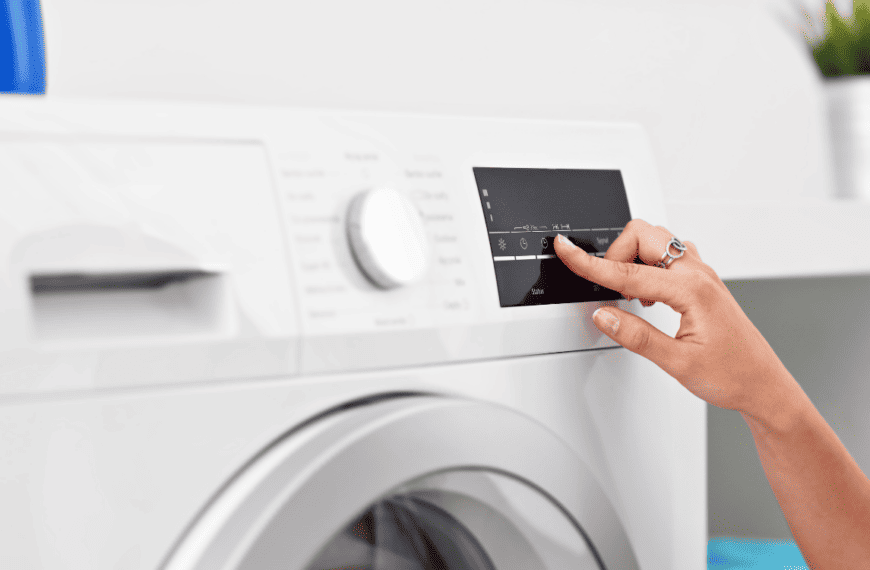At the end of an exhausting day, nothing beats diving into a deep sleep with the help of a plush feather pillow. But if you’re not smart about your cleaning habits, you’re likely also landing in a faceful of filth!
More than anything in the house, bed pillows get dirty in a hurry. While we’re shedding stress with a good night’s sleep, we’re also letting loose loads of skin cells, sweat, and oils. And that waste makes the perfect setting for bugs and microbes to thrive. One study even suggests that dead skin and dust mites can make up one-third of a pillow’s weight!
It’s time to save your feather pillow’s soft feel and refreshing smell. Make your luxury bedding last by following these tips on cleaning and caring for feather pillows.
How to Wash Feather Bed Pillows
To nobody’s surprise, goose and duck feathers in pillows can handle a decent amount of water. Synthetic materials like foam often rip, clump, and degrade in the wash. But feather pillows? You can douse and toss them around, and they’ll generally emerge unscathed.
That doesn’t mean there aren’t rules to follow. Waterfowl feathers are not meant for detergent-filled washing machines. You can ruin the pillow’s feel with the wrong setting or product. Here’s how you can wash feather pillows without worrying about them breaking down.
1. Check the Pillow Before Washing
Always check two things before washing a feather or down pillow — the care tag and the shell. While feather and down pillows can deal with light cleaning, they may contain foam and other comfort layers that break down in the washing machine. The label should tell you how you can wash it at home or if it’s dry-clean-only.
After checking the label, inspect the cover for rips or holes. You don’t want feathers or down migrating out of the pillow in the washing machine. Pay close attention to the seams for loose threads. If you don’t mend them, the agitation can open seams and throw feathers around the washer.
2. Pick a Specialty Product or Mild Liquid Detergent
As we’ll explain shortly, standard laundry detergent isn’t great for feathers and down. It puts you in a tough spot when you need to clean. You need a cleaner to have any hope of lifting stains and smells, but soap suds and detergents can damage feathers.
For a safer way to get your feather pillows clean in the wash, try a specialty product like Nikwax Down Wash Direct. Simply use it instead of detergent. The product works on all kinds of items with down and feather filling, including jackets and comforters. It maintains loft without stripping the natural body oils on the feathers.
Use mild laundry detergent in your washing machine. A formula that is safe for wool, silk, and other natural fibers will usually work well. Only add a couple of teaspoons of detergent. With too much soap, feathers and down will clump and become brittle.
3. Don’t Use Fabric Softener
Fabric softener in the washing machine makes materials feel plusher. It coats fibers with a charged chemical, getting them to stand and fluff up. But on down and feathers, fabric softener adds weight and encourages clumping.
When cleaning feather pillows, try ½ cup of distilled white vinegar, a popular fabric softener substitute and cloth cleaner. Low-pH substances don’t degrade feathers like alkaline cleaners. You can get deodorizing and softening benefits without worrying about your feather filling wearing out.
Don’t like the smell of vinegar? A small amount likely won’t cause much odor in the wash, and it goes away quickly. But if you seriously can’t stand it, add a few drops of a favorite essential oil to get rid of the vinegar odor.
4. Balance the Machine with Two Pillows
Wash feather pillows two at a time to keep a balanced load. Take off any covers to put with the rest of your bedding in a separate laundry load. Place one feather pillow on either side of the drum.
If the washer has an agitator, stand the two pillows vertically. Agitators may harm delicate feather pillows. Since you’ll only wash them a few times each year, you may want to take them to a laundromat with a front-loading washing machine for the most thorough cleaning.
5. Use Low Water Temperature, Delicate Cycle
Hot water can shrink certain materials and potentially damage feathers. To ensure the best results, follow the manufacturer’s wash instructions.
Err on the cautious side if the pillow doesn’t detail the temperature or cycle setting. Protect your feather pillows by washing them on a cold temperature setting and a gentle spin cycle.
6. Do an Extra Rinse Cycle
Removing extra detergent and soap residue is essential to keep feather and down pillows fluffy and supportive. Put them through a second rinse cycle. If your machine has a “spin only” option, you can give them another low-speed setting to release more moisture.
7. Hand Squeeze Excess Water
The dryer will take time to get all the moisture out of a down and feather pillow. Speed up the process by squeezing as much water as possible before drying.
Put a clean towel (or two) on a flat surface and lay the pillow on it. Place another towel over the top. Press down firmly to sandwich it between the towels. Twisting and contorting it could damage the material layers. Apply gentle downward pressure to prevent damage. Fluff the pillows before putting them in the dryer.
8. Add Dryer Balls
Wool dryer balls will help your feather pillows fluff up as they tumble and allow quicker drying. Alternatively, you can use a few clean tennis balls. If you’re worried about dye transfer, toss the balls in clean white socks before adding them to the dryer. Feel free to use a fabric softener sheet. The material may touch the pillow’s outer shell, but it won’t have much effect on the feather filling.
9. Dry on a Low Heat Setting
Drying feather pillows on high heat can damage the fill. Dry on low heat or use no heat unless the pillow’s care tag says otherwise.
10. Dry the Pillows Completely
Down and feather pillows will develop mold and mildew if they aren’t 100% dry. The dryer could take over an hour, or more depending on your local climate, to get them bed-ready with a low-heat setting.
Dry your pillow with several 15-minute low-heat cycles. Fluff your pillow between each cycle to loosen the fill and help them dry faster. Check for feather clumps or a musty smell, indicating it isn’t completely dry.
11. Air Dry (Optional)
Air drying is slower, but you might prefer the gentle effect of natural sunlight and a fresh breeze. Studies have proven the sun’s microbe-killing power. Since you can’t use harsh detergents, you may even find it the most effective way to deodorize and lighten stains on the material.
Lay your feather pillow on a flat surface, preferably a rack that allows airflow on all sides. Let it rest for several hours in a sunny, breezy location. Flip and fluff it every 30–60 minutes.
Should You Wash Feather Pillows?
Washing feather pillows is possible, but the best way to make them last is to maintain and protect them. You should not rely on your laundry equipment to save your pillows. Several components of the typical washing and drying process can potentially damage feathers over time.
Alkaline Cleaners
Feathers and down consist of beta-keratin, a structural protein. Human hair also consists of keratin (alpha-keratin). And like human hair, feathers and down get oily. Birds produce preen oil and use their head and beak to coat their feathers. The oil retains the feathers’ waterproof characteristics and protects them from harm.
Unfortunately, laundry detergent’s purpose is to break down proteins and oils. Alkaline cleaners featuring a high pH are common in detergents, working to degrade fats and oils. Surfactants mix with water to lift grease and similar stains from clothing. But if they interact with feathers, they’ll also try to strip the protective preen oil.
It’s like our hair when we shampoo. An alkaline cleaner clears away the dirt alongside our natural hair oils. Hair can feel coarse and stiff afterward, but we replenish its oils from glands in our scalp. But for obvious reasons, feathers in a pillow can’t recover their preen oil. They’ll lose their water repellency, eventually becoming dry and brittle.
Enzyme Cleaners
Enzyme cleaners are an excellent solution for cat urine on carpets, grease drips on fabric, and other organic stains. Many modern laundry detergents use enzymes to lift common stains like grass, food residue, blood, and sweat.
Different enzymes target specific organic substances. Key enzymes include:
- Lipase enzymes break down fats and oils
- Amylase enzymes degrade starches
- Protease enzymes processes proteins
Detergents use several enzymes to address a vast array of potential stain types.
One type of protease, called keratinase, breaks down keratin, the foundation of feathers. It isn’t anything you want around your down and feather bed pillows. The keratin in feathers is resilient, but constant exposure to degrading additives can wear it down over time.
How to Take Care of Your Feather Pillows
You should only clean a feather pillow in the washing machine twice annually. And when you do wash it, you must take a delicate approach. With low heat and only a little detergent, there isn’t much to kill tons of dust mites or lift tough stains.
Washing your down and feather pillows will refresh them, not revive them. To keep your pillows lasting as long as possible, you must prevent dirt, dust mites, and microbes from filling them up.
Here are a few tips for getting the most miles out of your feather pillow.
Always Use a Pillow Protector
A pillow protector is a zip-on cover that goes over your pillow and under the case. As you shed fluids and dead skin cells overnight, a protective cover blocks them from penetrating your pillow. Many protectors will also block dust mites and allergens, keeping the pillow cleaner and giving you a healthier night’s sleep.
Your pillow protectors and cases can make your rest more comfortable while protecting your sleep surface. The plush feel is incredible, but one massive knock against down pillows is the heat that builds in down clusters. With a heat-deflecting and breathable protective cover, you can enjoy a cooler and more comfortable sleeping experience.
Fluff Your Feather Pillow Occasionally
Airing your pillow out in the dryer between washes will maintain its loft and remove any built-up moisture. Regular dehumidifying is a helpful step in removing an ideal environment for dust mites.
Put your feather pillows in the dryer with a few dryer balls or tennis balls. Add a damp cloth and dryer sheets, if desired. Run the dryer on low heat to get the pillow completely dry. Hand fluff it before putting it back on your bed.
Storing Feather Pillows
A dry and well-ventilated space is ideal for protecting feather bed pillows. Humidity levels below 50% hinder dust mite growth. Run a dehumidifier during muggy summer days, and use desiccant packs in the closet with any stored pillows. Do not store down and feather pillows in plastic storage bags, as they can trap moisture.
Don’t Go to Bed with Wet Hair
Clean hair helps prevent body oil from leaving yellow stains on your feather and down pillow, but timing your shower is crucial.
Don’t go to bed with wet hair. Try to shower at least a few hours before bed, or wait until the morning. If you must go to bed with damp hair, get an absorbent cover like the DryZzz Absorbent Microfiber Pillow Case to protect your luxury pillows (and your hair) while you sleep.
Find Help with a Housekeeping Pro
Keeping your soft pillows in exceptional shape takes effort, but the difference it can make at bedtime will change how you sleep. Still, not all of us have the time or patience for a lengthy washing process.
If you have the need but can’t put in the effort, let Anita’s fill the cleaning gaps in your busy schedule. Request a booking today to find a local housekeeping expert to help ease the stress and manage the mess.









